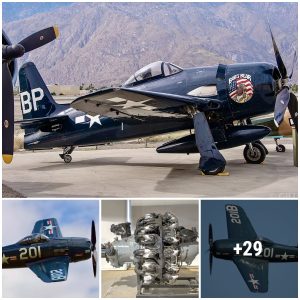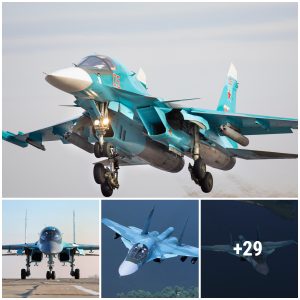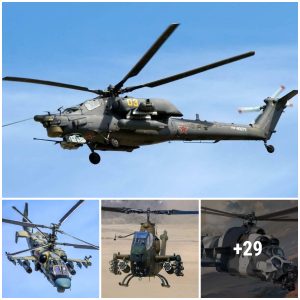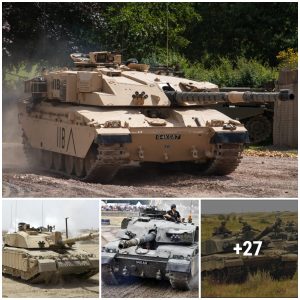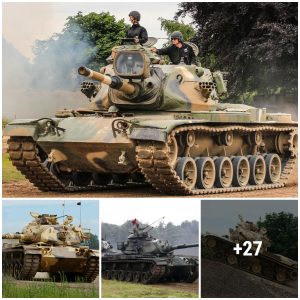Sure, the future of military aviation seems locked down in the Tempest and NGAD efforts at the moment. But it is never too early for nations like Russia, China, or the U.S. to start thinking about what a 7th Generation fighter might look like:

The future is always around the corner, so we can always expect something new. Sometimes it will be small steps forward, while other times, it will be great leaps ahead. With military hardware, we’ve really reached a point where most of the advances are evolutionary, building on past successes and proven features rather than revolutionary – which could take designers in an entirely new direction.
Such is the case with the B-21 Raider, which is now in development. It is mainly building on the successes of the B-2 Spirit, and both feature a flying wing design. Likewise, most sixth-generation fighter designs have focused on what worked with fifth-generation aircraft and have taken it much further.
The question then is what we can expect with the “next-generation” beyond what is already in the prototype stage? Yet, even aviation experts can only ponder what we could expect to see.
“To be honest, I’ve not really heard anyone even mention 7th generation,” explained Gareth Jennings, aviation editor at Janes.
“Most ‘Tier 2’ nations that are building aircraft – Turkey, South Korea, etc. – are building their own fifth-generation jets, while Tier 1 nations (US, UK [and partners], France [and partners]) are looking at sixth generation. 7th Generation isn’t really ‘a thing’ as yet,” added Jennings. “That said; it is possible to look at the progression of previous generations and extrapolate that forward to take an educated stab at what might be features in a 7th generation jet.”
However, Jennings further continued that even our concept of the generations of such wasn’t set in stone. In fact, until the development of today’s most modern fighters, there was no talk of a particular aircraft falling into a particular generation.
“It’s important to first note that ‘generations’ don’t really exist – they have only come into being as a way of classifying aircraft since Lockheed Martin used the term ‘fifth-generation’ to describe its F-35, and all older aircraft were kind of backfilled into what previous generation they were determined to best fit – so the F-4 became a third-generation aircraft, and the Eurofighter a fourth generation aircraft, etc.,” said Jennings. “Lockheed Martin will readily admit that it was a marketing gimmick to make their product stand out, but it has stuck and is now in widespread use.”
The Road to 7th Generation: Generations Described

Even though the designations were actually only retroactively created, the U.S. Air Force has since broken down the respective capabilities of the generational designations:
*First-Generation: Jet propulsion
*Second-Generation: Swept wings, range-finding radar, and infrared-guided missiles
*Third-Generation: Supersonic flight, pulse radar, and missiles that can engage opponents from beyond visual range
*Fourth-Generation: High levels of agility, some degree of sensor fusion, pulse-doppler radar, reduced radar signature, fly-by-wire, look down/shoot down missiles, and more.
“So the thing about generations is that each new generation focuses on a number of key performance attributes while retaining the key performance attributes that defined the generations before it,” Jennings suggested. “As an example, the third-generation F-4 Phantom retained the supersonic speed that largely defined the previous generation, but added to that advanced (for its day) mission computing and guided missiles.”
In addition, the fourth-generation aircraft then took all of this and added fly-by-wire and advanced avionics, whilst the fifth-generation took all of this and added stealth, sensor fusion, and supercruise, Jennings noted.
“The sixth-generation will take this and add capabilities that haven’t yet been publicly defined, but which are understood to include flexible payloads; an adaptable airframe; long-range sensing; analytics and computing; laser directed-energy weapons; advanced materials; intelligent maintenance; dynamically reconfigurable architecture; cyber protection; manned-unmanned teaming (MUM-T); trusted artificial intelligence (AI) reasoning; airspace integration; hypersonic-propulsion technologies; space technologies; and a future ‘wearable’ cockpit,” he further explained. “Added to these technological attributes, the sixth-generation is designed to be affordable and to utilize futuristic manufacturing processes and methods.”
Other Hardware Leaps Forward

It is also important to note that aircraft have been unique in that they have been so steadily upgraded over the past 80 years. By contrast, the United States military is still fielding its M1 Abrams, a “third-generation” main battle tank (MBT). Two factors need to be considered, however. First, it was indeed a revolutionary leap forward, rather than evolutionary – and thus it may have reached a level of armored perfection, at least until some new technology is developed.
Second, and more importantly, the M1 Abrams has been steadily improved in a way that fighter aircraft generally aren’t. However, the Cold War-era B-52 Stratofortress remains a capable bomber that will remain in service even as the aforementioned B-21 Raider comes into service. By the time the B-52 is finally retired, it could have served for nearly 100 years – and few military platforms have seen such longevity. This has been made possible due to the improvements it has received.
Jet fighters, which have increasingly become multirole aircraft, have continued to evolve – and will continue to do so. That explains why the 70-year-old B-52 and 50-year-old M1 Abrams tank remain in service, while efforts are already underway to replace the fifth-generation F-22 Raptor, which only entered service in 2005!
About the 7th Generation Aircraft

All that said, it is likely that some in the aerospace sector are thinking well beyond the currently-in-development aircraft to what can come next. The question becomes what could the next generation actually look like. We need only look to other technological developments in our civilian world today to see what the next great leap forward could bring.
“With the advent of the Metaverse, 3D metal printing, and the increasing capabilities of realistic simulation, our ability to create new weapons, including fighters quickly, is advancing significantly,” explained technology analyst Rob Enderle of the Enderle Group.
“At the same time, autonomous technology is becoming more viable, and the concept of human digital twins is creating the opportunity for a next-generation fighter not limited by human frailties,” Enderle told this reporter. “While it often takes a war to force a legacy process, like aircraft creation, to adjust to the speed of current technology, there is no reason why the next generation of high-performance fighters couldn’t be created in months rather than years, and be configured to be flown by a digital twin of a top gun pilot.”
The 7th generation fighter thus may not be decades in development and could be a response, even a reaction, to what the sixth-generation may offer.
“It can reasonably be supposed that the 7th generation will again take all of these facets, and add some as yet undefined/unknown technological capabilities that will define it as being different and more advanced than all that have gone before it,” said Jennings. “What these will be is hard to say, as anything we can now imagine as being a viable and desirable technology and capability is already being addressed in the sixth-generation, and it’s hard to imagine what hasn’t yet been conceptualized or invented. My personal feeling, however, is that by the time we start to get to thinking about the 7th generation, the technology will be there to remove the pilot altogether and for the platform to be fully unmanned (not just remotely piloted, but autonomous in its own right). The issues, however, won’t be technological, but will be more ethical, moral, and/or even legal as to the extent society is comfortable with the idea of such capabilities being developed and deployed.”
However, what is also likely is that multinational efforts may be required to design, develop and, most importantly, produce the next generation.
“In terms of programmatics, as with the fourth, fifth and sixth generation, it is likely that any 7th generation program will be an effort in multinational collaboration (in the West at least), due largely to the costs involved in such an undertaking, as well as the need for common requirements, and to maximize the exports that will help pay for it,” Jennings added.
While Enderle suggested the time gaps could come down, Jennings isn’t as confident. It is true that technology is rapidly increasing, which can allow for materials to be printed – advancing prototyping and even production – while computer-aided design (CAD) can also speed the development; yet, the cost will remain a factor.
“For timelines, the gap between each generation has progressively lengthened as technologies have become more complex (at the same time as becoming more stable – the big jumps we saw in aviation technology and innovation at the dawn of the jet age are now much more incremental), while development, manufacturing, procurement, operating, and sustainment costs have risen to the extent that most nations would prefer to continue to use older aircraft which they can upgrade at a quicker pace and lower cost to keep pace with (most of) their peers and near-peers,” he noted. “As such, I wouldn’t expect 7th generation to enter the discourse until probably the 2070s or even later.”

